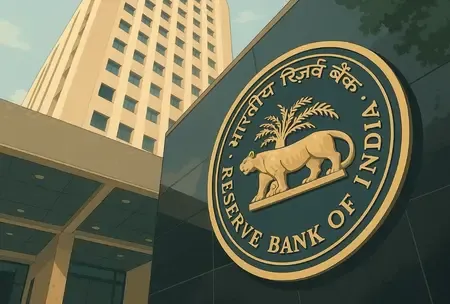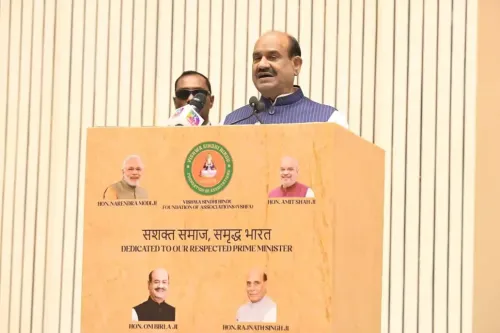Are Banks Increasing Funds via CDs to Boost Credit Operations?

Synopsis
Key Takeaways
- Indian banks are borrowing heavily via CDs.
- Credit demand is outpacing deposit growth.
- The credit-deposit ratio has exceeded 80%.
- Market borrowings are essential for liquidity.
- CDs are a cost-effective funding alternative.
Mumbai, Nov 23 (NationPress) Indian financial institutions have markedly escalated their borrowing through Certificates of Deposit (CDs), reaching almost Rs 55,000 crore in the two weeks ending November 14, marking the highest level since mid-September, as per data from the Reserve Bank of India (RBI).
This increase is spurred by robust credit (loan) demand that consistently surpasses deposit growth within the banking sector.
The volume of CD issuances in the first half of November 2025 was twice that of the prior two fortnights.
The credit-deposit ratio of the banking system has surpassed the 80 percent mark for the first time, reaching 80.47 percent by October 31, 2025.
This signals that banks are loaning out a significant portion of their deposits and are in need of alternative funding mechanisms.
To meet the ongoing demand for loans, banks are increasingly depending on market borrowings such as CDs, especially as deposit growth remains in the single digits while credit growth is robust, driven by the expanding economy.
The rise in CD borrowing was partially influenced by a dip in short-term borrowing rates after the RBI set lower-than-anticipated cut-off yields at a recent treasury-bill auction, making CD issuances more appealing, according to market insiders.
Funds collected through CDs surged as borrowing rates declined following the RBI's lower-than-expected cut-off yields during its weekly treasury-bill auction, prompting banks to enhance their issuance of CDs.
The RBI established the cut-off for the 91-day T-bill at 5.38 percent, which fell short of market expectations, analysts noted.
A healthy demand for CDs from mutual funds has also bolstered banks' capacity to issue these instruments.
Market analysts predict that banks will continue to depend on CDs to satisfy year-end credit demand, especially during the festive season when retail sales peak.
CDs are negotiable money market instruments issued by banks with maturities ranging from a minimum of seven days to a maximum of one year.
These instruments represent a cost-effective alternative to bulk term deposits, contributing to the total deposit pool of banks.
Additionally, they aid banks in replenishing maturing deposits, ensuring more effective liquidity management, which reinforces their reliance on such instruments.









